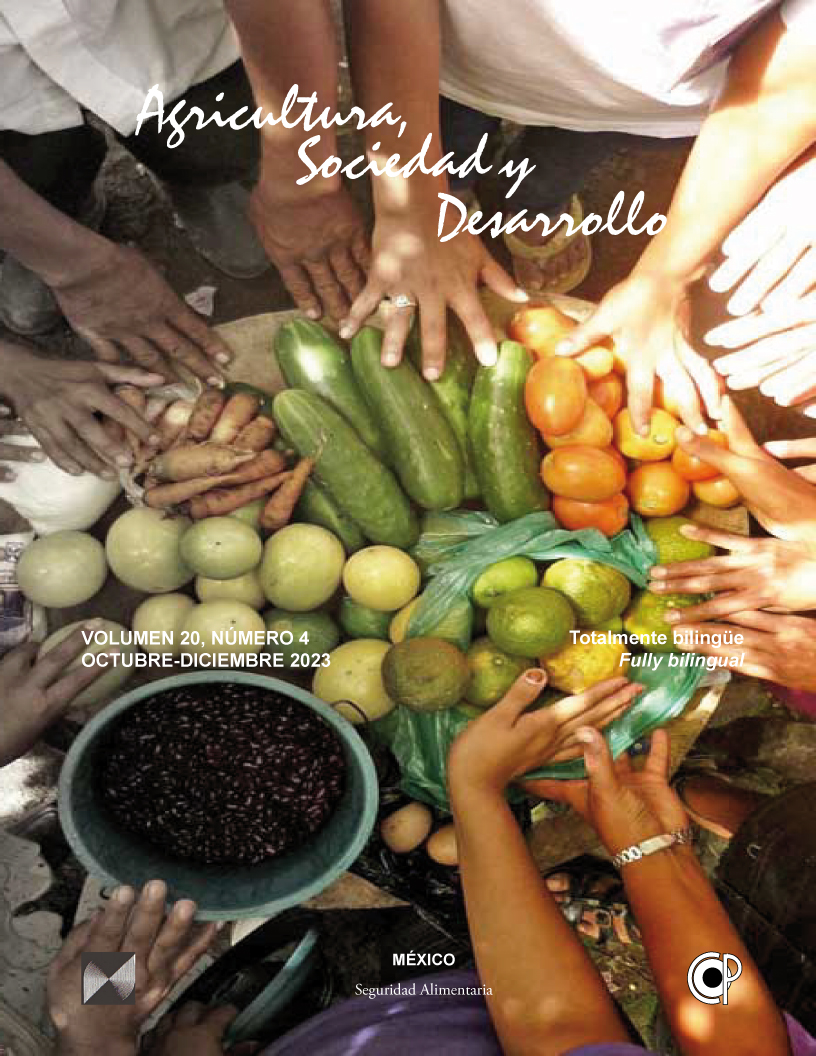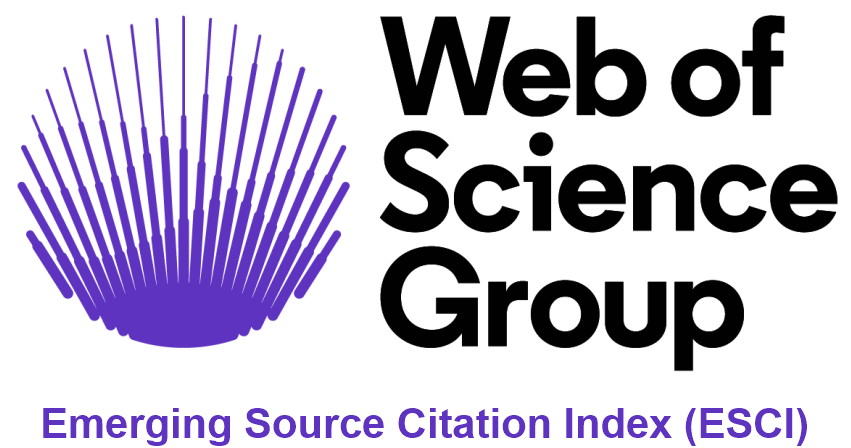Typology of dry chili pepper producers in Zacatecas, Mexico
DOI:
https://doi.org/10.22231/asyd.v20i4.1574Keywords:
Capsicum anuum, characterization, competitivenessAbstract
Chili pepper is a vegetable of commercial importance that is cultivated globally. In Mexico, the state of Zacatecas is the first place in surface sown for the production of dry chili pepper, and the number of farmers devoted to this crop highlights its socioeconomic importance. The characterization of farmers according to their management, productive, social and economic variables allow to understand the technologies used and decision-making at the level of production unit to develop differentiated policies by production system. Therefore, in this study the objective was to analyze and identify the types of dry chili pepper farmers in Zacatecas. The data were gathered through a survey with 66 dry chili pepper farmers in Zacatecas, Mexico, and they were analyzed through conglomerates, one-factor analysis of variance, multidimensional scaling and correspondence analysis. The results suggest three types of farmers: 1) traditional, 2) intermediate, and 3) entrepreneurial. Of the farmers, 78.7% were found in the last category, which explains the competitiveness of the crop in face of other product systems and other states of the Mexican Republic.
References
Acosta DB, Camacho YF, Hernández CM. 2021. Oportunidades de exportación de piña (Ananas comosus) en el mercado francés. Ciencias Agropecuarias. 7(1). 69-84.
Aguilar AJL, Grageda COA, Vuelvas CMA, Martínez HM, Solís ME, Medina CT, Ramírez RA. 2005. Eficiencia de fertilizantes aplicados con fertirriego en chile ancho (Capsicum annuum L.). Agricultura técnica en México. 31 (2). 177-189.
Betancourt K, Ibrahim M, Villanueva C, Vargas B. 2005. Caracterización del manejo productivo de sistemas lecheros en la cuenca del rio Bulbul de Matiguás, Matagalpa, Nicaragua. Livestock Research for Rural Development. 17(80).1-12.
Borja-Bravo M, Reyes-Muro L, García-Salazar JA, Almeraya-Quintero SX. 2016. Tipología de productores de uva (Vitis vinifera L.) en Aguascalientes, México. Revista Mexicana de Ciencias Agrícolas. 7(2). 249-261. https://doi.org/10.29312/remexca.v7i2.341. DOI: https://doi.org/10.29312/remexca.v7i2.341
Borja BM, Vélez IA, Ramos GJL. 2018. Tipología y diferenciación de productores de guayaba (Psidium guajava l.) en Calvillo, Aguascalientes, México. Región y sociedad. 30(71). 1-22. DOI: https://doi.org/10.22198/rys.2018.71.a402. DOI: https://doi.org/10.22198/rys.2018.71.a402
Bojórquez AL. 2021. Precios justos y tendencias de venta de productos agropecuarios mexicanos a intermediarios. Cuadernos de Desarrollo Rural, 17. (86) https://doi.org/10.11144/javeriana.cdr17.pjtv. DOI: https://doi.org/10.11144/Javeriana.cdr17.pjtv
Carrillo-Martínez CJ, Álvarez-Fuentes G, Aguilar-Benítez G, García-López JC, Contreras-Servín C. 2019. Rentabilidad de la producción de frijol (Phaseolus vulgaris L.), maíz (Zea mays L.) y chile (Capsicum annuum.) en el municipio de Morelos, Zacatecas. Acta universitaria. 29 (2019).1-16. DOI: https://doi.org/10.15174/au.2019.1984. DOI: https://doi.org/10.15174/au.2019.1984
FAO. 2022. FAOSTAT: Datos sobre alimentación y agricultura. https://www.fao.org/faostat/es/#home.
Guillem E, Murray D, Robinson T, Barnes A, Rounsevell M. 2015. Modelling farmer decision-making to anticipate tradeoffs between provisioning ecosystem services and biodiversity. Agricultural Systems. 137.12- 23. https://doi.org/10.1016/j.agsy.2015.03.006. DOI: https://doi.org/10.1016/j.agsy.2015.03.006
Hair J, Anderson E, Tatham R, Black W. 1998. Multivariate Data Analysis. Prentice-Hall International, Inc. New Jersey, USA. 730 p.
IBM Corporation. 2022. SPSS software. https://www.ibm.com/mx-es/analytics/spss-statistics-software. Accesado febrero 2022.
INAFED. 2010. Sistema Nacional de Información Municipal (SNIM). http://www.snim.rami.gob.mx/ Accesado noviembre 2022.
INEGI (Instituto Nacional de Estadística y Geografía). 2017. Encuesta Nacional Agropecuaria (ENA 2017). Conociendo el campo de México. INEGI. https://www.inegi.org.mx/programas/ena/2017/#Tabulados
INEGI. 2022. Información por entidad: clima https://cuentame.inegi.org.mx/monografias/informacion/zac/territorio/clima.aspx?tema=me&e=32. Accesado sptiembre 2022.
Kostrowicki J. 1977. Agricultural typology concept and method. Agricultural Systems. 2(1). 33-45. https://doi.org/10.1016/0308-521x(77)90015-4. DOI: https://doi.org/10.1016/0308-521X(77)90015-4
Kruskal JB. 1964. Nonmetric multidimensional scaling: A numerical method. Psychometrika 29(2). 115- 129. https://doi.org/10.1007/bf02289694. DOI: https://doi.org/10.1007/BF02289694
Larqué B, Sangerman D, Jarquín M, Ramírez B, Navarro A, Serrano M. 2009. Aspectos técnicos y caracterización del productor de durazno en el estado de México. Agricultura Técnica en México. 35(3).305-315.
Martínez AFB, Guevara HF, La O AMA, Rodríguez LLA, Pinto RR, Aguilar JCE. 2020. Caracterización de productores de maíz e indicadores de sustentabilidad en Chiapas. Revista Mexicana de Ciencias Agrícolas. 11(5). 1031-1042. DOI: https://doi.org/10.29312/remexca.v11i5.2189. DOI: https://doi.org/10.29312/remexca.v11i5.2189
Pantoja ZGM, Servín HBA. 2022. Productores citrícolas del Estado de Nuevo León, características, problemas y alternativas. Intersticios sociales. (24). 365-392. https://doi.org/10.55555/is.24.429 DOI: https://doi.org/10.55555/IS.24.429
Paz, R. 1999. Heterogeneidad, pluriactividad y procesos de transformación en campesinos cañeros. Comunidad de Bajo Grande, Tucumán, Argentina. Agro sur, 27(1). 72-84. https://doi.org/10.4206/agrosur.1999.v27n1-08. DOI: https://doi.org/10.4206/agrosur.1999.v27n1-08
Pérez C. 2004. Técnicas de análisis multivariante de datos. Aplicaciones con SPSS, Madrid, Universidad Complutense de Madrid. 121-154.
Ramos C, Alcántar G, Galvis A, Peña A, Martínez A. 2002. Eficiencia de uso del nitrógeno en tomate de cáscara en fertirriego. Terra Latinoamericana, 20(4). 465-469.
Reyes RE, Pérez VO, Padilla BLE. 2009. Diferenciación de productores de frijol (Phaseolus vulgaris L.) en una zona de alta migración en Zacatecas, México. Rev. Geog. Agríc. (41). 31-50.
Sánchez TBI, Zegbe DJA, Rumayor RAF. 2013. Metodología para el diseño, aplicación y análisis de encuestas sobre adopción de tecnologías en productores rurales. Folleto técnico No. 39. Campo Experimental Zacatecas, INIFAP. 80 p.
Sánchez-Toledano BI, Kallas Z, Palmeros O, Gil JM. 2018. Determinant factors of the adoption of improved maize seeds in Southern Mexico: A survival analysis approach. Sustainability. 10(10). 3543. https://doi.org/10.3390/su10103543. DOI: https://doi.org/10.3390/su10103543
Sánchez-Toledano B, Zegbe JA, Mena-Covarrubias J, Echavarría CFG: 2022. Situación actual y futura de la cadena productiva de chile verde: un caso de estudio en Zacatecas, México. Rev. Fitotec. Mex. 45(2). 261-270. https://doi.org/10.35196/rfm.2022.2.261. DOI: https://doi.org/10.35196/rfm.2022.2.261
Sánchez-Toledano B. 2021. Variedades de melocotón con mayor potencial económico: un estudio de caso en el norte de México. ITEA, información técnica económica agraria: revista de la Asociación Interprofesional para el Desarrollo Agrario (AIDA), 117(5). 598-617. https://doi.org/10.12706/itea.2021.009. DOI: https://doi.org/10.12706/itea.2021.009
Schejtman A. 1982. Land reform and entrepreneurial structure in rural Mexico. Rural poverty and agrarian reform/edited by S. Jones, PC Joshi, M. Murmis.
SIAP. 2020. Avances de siembras y cosechas. Resumen por estado. Secretaría de Agricultura y Desarrollo Rural. Ciudad de México. http://infosiap.siap.gob.mx:8080/agricola_siap_gobmx/ResumenProducto.do Accesado enero 2022.
SIAP. 2022. Producción Agrícola. https://www.gob.mx/siap/acciones-y-programas/produccion-agricola-33119. Accesado enero 2022.
Torres C. 2013. Análisis del programa especial concurrente para el desarrollo rural sustentable en México. Desarrollo local sostenible. 6(18).
Ward JH. 1963. Hierarchical grouping to optimize an objective function. Journal of the American Statistical Association 58. 236-244. https://doi.org/10.1080/01621459.1963.10500845. DOI: https://doi.org/10.1080/01621459.1963.10500845
Published
How to Cite
Issue
Section
License
Copyright (c) 2023 Blanca Isabel Sánchez Toledano, Mercedes Borja Bravo, Sergio Arellano Arciniega

This work is licensed under a Creative Commons Attribution-NonCommercial 4.0 International License.
Authors who publish in this journal accept the following conditions:
- The authors retain the copyright and transfer to the magazine the right of the first publication, with the work registered with the Creative Commons attribution license, which allows third parties to use what is published as long as they mention the authorship of the work and the first publication in this magazine.
- Authors may make other independent and additional contractual arrangements for non-exclusive distribution of the version of the article published in this journal (e.g., including it in an institutional repository or publishing it in a book) as long as they clearly indicate that the work It was first published in this magazine.
- Authors are permitted and encouraged to publish their work on the Internet (for example on institutional or personal pages) before and during the review and publication process, as it can lead to productive exchanges and greater and faster dissemination of the work. published (see The Effect of Open Access).













